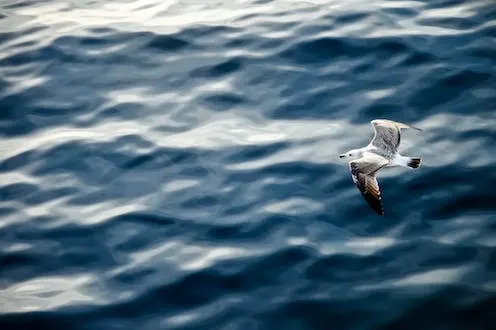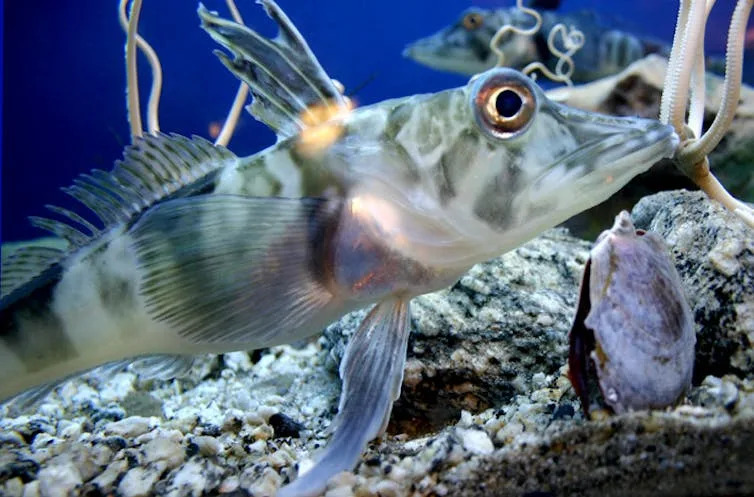Sarah Crompton
Tue, 7 March 2023

Alice Robb explores life as a student at the School of American Ballet in New York, in her new book (Nina Subin)
From the age of nine until the age of 12, Alice Robb was a student at the School of American Ballet in New York. She has the photographs and the psychological scars to prove it. She gave up ballet at the age of 15 and built a successful career as a journalist and writer. Yet it has defined her ever since.
Don’t Think, Dear: On Loving and Leaving Ballet is her ode to her long-lost dream of dancing with America’s leading ballet company, New York City Ballet, but also an attempt to understand and unravel the effect that early training had upon her – and the effects that it might have on all the little girls who long to be ballerinas.
“Ballet does not exist in a vacuum,” she writes in her introduction. “It is a laboratory of femaleness – a test-tube world in the middle of modern New York or London or Paris, in which traditional femininity is exaggerated. The traits ballet takes to an extreme – the beauty, the thinness, the stoicism and silence and submission – are valued in girls and women everywhere. By excavating the psyche of a dancer, we can understand the contradictions and challenges of being a woman today.”
The starting point for her book is a photograph she unearthed of her class at the School of American Ballet (SAB) when she was about 11 or 12. There are 20 girls in the picture, hair scraped back, backs erect, necks stretched. Of those, only one is still a professional dancer, but they were all marked and shaped by the years they tried to achieve their ambitions, suffering eating disorders, loss of confidence and profound depression.
In this they are not alone. She quotes a Teen Vogue survey that estimated that of the 300,000 girls who train at a professional level every year, with a serious intention of becoming ballerinas, only 2 per cent will make it into companies, and that’s not even taking account of all those who take up ballet recreationally. “I read a lot of ballet memoirs,” says Robb. “But they are stories of ballet success. The narrative tends to be there’s all this pain and sacrifice but look how it’s paid off. Yet all the people who almost make it are also making pretty much exactly the same sacrifices and going through the same amount of pain, so I think those stories are also worth telling.”
We are talking on Zoom because Robb is currently based in New York, though she is about to move to London where her boyfriend lives and works. She is an attractive 31-year-old, her mass of hair loosely tied back, her manner warm and interested. “Ballet still has such a hold on the feminine imagination,” she continues. “So many little girls go through a ballet phase, so I think it is like an under-explored, under-analysed part of femininity. It has the same appeal as Princess culture, but it’s more attainable.”
That was its original attraction for her. “I just loved the girliness of it,” she says with a grin. But she pursued her ambition with steely determination. She was turned down for SAB twice before she was accepted; she carried on dancing at different academies when she was thrown out, even when it became obvious that her body was developing in ways that made it impossible for her to pursue a professional career – her hips that continued to widen, her feet that refused to arch. For years afterwards, she would dream she was auditioning for a role, and suddenly feel the joy of thinking it was not too late, that she could still be a star.
It’s a level of obsession that she examines in minute detail, but why did it hold her in its grip for so long? “SAB was the real goal of my childhood,” she explains. “And although I was only there three years, it was also the summer programmes, the extra classes, the schools I attended afterwards. On top of that I was practising at home, stretching every day, trying to walk with my feet turned out, dancing every Saturday. Ballet really was my identity.
“I think I knew that there was something seductive about ballet and about the way I acted within ballet. I was definitely a shy kid as so many dancers are, and it was a relief at some level to just follow instructions. To know what the rules were even if you’re trying to do things that are physically very challenging, or even impossible.
“Whereas the world outside can feel like this scary free-for-all. Particularly when I was growing up, I think there was this pressure to take advantage of opportunities that previous generations of women hadn’t had access to. Ballet was a way to sidestep all that. Of course, we were all very ambitious, but there was some comfort in the rules, and the structure, the sense that there was a ladder of progress that you could just put one foot in front of the other and climb.”

Alice Robb’s ‘Don’t Think, Dear: On Loving and Leaving Ballet’ is her ode to her long-lost dream of dancing with America’s leading ballet company (source)
For each of her three years at ballet school, Robb was one of the children who performed in the professional production of George Balanchine’s The Nutcracker at NYCB. “It was so powerful to be in such proximity with those professional dancers,” she adds. “I think that I still have this romantic, idealistic image that dancers are the ideal woman, beautiful, controlled but also powerful.”
Yet her book is a searing testimony that lays bare the cost of that ideal. Its pages are haunted by stories of suppression and pain. Its title is taken from a quotation by Balanchine, the Georgian-American choreographer who co-founded both the School of American Ballet (1934), and New York City Ballet (1948), where he was artistic director for an astonishing 35 years. Famously, he said “ballet is woman”, and his works were inspired by the dancers he was working with, who were very often the women he loved. He had five ballerina wives and gave each a signature scent. His dancers by and large adored him and aspired to be his muse, but he cultivated a style that prized an extremely low body weight. Robb quotes him telling one corps de ballet dancer: “You are like inside a cocoon; your true personality will only be revealed when all the fat is gone, and you are down to your bones.”
He died in 1983 but his ethos was continued by his successor Peter Martins who left the company in 2017 after allegations (which he denied) of sexual abuse came to light. And Balanchine’s dominant shadow still haunts Robb’s own idea of what it is to be a ballerina. That obsession with a certain body type has influenced the view of what a dancer should look like ever since; the constant exhortation of her classmates to “lengthen” and “tone up” were disguised messages that they should lose weight to dangerously low levels. Robb not only quotes examples of famous ballerinas starving themselves to achieve their ideal weight but talks about a classmate who ended up unable to digest solid food.
The glorification of thinness is a recurring theme, but it is also an amplification of obsessions in the world beyond dance. “You hear so many justifications,” Robb says. “Like ballet just looks better on a certain type of body or it’s so you can see the choreography. But these are all conventions. Ballet is made up. When I quit ballet, there was some element of relief in realising that I didn’t have to wear a leotard anymore, and it didn’t matter if I gained five pounds. But it wasn’t like I was going into a world where looks and weight didn’t matter. People are still applauded and rewarded for being thin.”
When I quit ballet, there was some element of relief in realising that I didn’t have to wear a leotard anymore, and it didn’t matter if I gained five pounds
It is not just body dysmorphia that Robb identifies as part of the cost of ballet, through stories of both famous and unknown dancers. She also recognises the way that ballet – and it is specifically ballet rather than other forms of dance – requires self-sacrifice, a setting aside of self, an endurance of all kinds of hardship, both physical and psychological. All are qualities valued in women, but all seen at their most extreme in ballet.
She talks about Margot Fonteyn, the greatest dancer of her own and many other ages, who was always at the beck and call of worthless men; of the American ballet star Gelsey Kirkland, principal dancer with NYCB and then with American Ballet Theater in the Seventies and Eighties, who drove herself to cocaine addiction in her attempt to prove herself worthy. She describes the way that ballet studios can easily be a breeding ground for abuse of young girls by powerful men and for the cultivation of low self-esteem among the girls who study there.
“When I think about why ballet had such an impact on me, I realise I was doing it at such a formative time,” she says. “You’re discovering who you are and how you relate to your body. Yet people would say all the time, your body is your instrument. That’s just a different way to relate to your body. You are objectifying yourself, learning to see your body as not exactly your own, but as something that is serving an art.”
It is compelling reading, but I wonder how much her view is tempered by it being seen through the perspective of Balanchine’s NYCB. “I think that company has had this somewhat specific struggle of how to carry on without Balanchine,” she says. “But I don’t think it’s that different. A lot about it is universal. I think ballet culture and training are pretty similar everywhere.”
For all her trenchant criticism, she clearly values ballet as an art form – though she admits she finds it hard to watch because “it can still put me in a funny mood. I am saying this with an awareness of how ridiculous it sounds because I was not particularly close to becoming a professional dancer, but it can make me feel nostalgia and regret over not making it.”

For each of her three years at ballet school, Robb was one of the children who performed in the professional production of George Balanchine’s ‘The Nutcracker’ at NYCB (Debra Goldsmith)
Towards the end of the book, too, she notes some signs of change and hope. Her classmates find different kinds of resolution in their relationship with ballet; her friend who suffered the most extreme eating disorders carries on dancing and enjoys the best and healthiest years of her career in a contemporary dance company. Robb goes to see Seattle’s Pacific Northwest Ballet and notes a new inclusivity.
Robb admits that writing the book has been therapeutic for her. “I do think things are changing,” she admits. “But I didn’t focus on what is happening now because I wanted to look at the long-term impact of this training that happened to people in the 1990s.
“So yes, it is changing, you are starting to see different types of partnering, and non-binary dancers. Misty Copeland has done a lot to change the image of ballet, both in terms of her muscularity and also obviously her race. Social media has given professional dancers more power and more of a platform. But I do think ballet is still a very insular world, it’s still so competitive that people feel they can’t afford to speak out.”
Looking back, does she feel it gave her anything? “Oh yes,” she says smiling. “I do spend a fair amount of time talking about the negatives, but there were many positives as well. I think the most obvious one is probably the discipline of ballet. You have to show up for work every day. It sets you up for so many things. Even for being a freelance writer. I am intrinsically motivated, I show up.”
‘Don’t Think, Dear: On Loving and Leaving Ballet’, by Alice Robb, is out now













